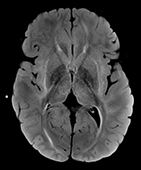Clinical Biomarkers of CAR T Cell Neurotoxicity
 The overarching goal of this study is to make cancer therapies less toxic to children’s developing brains. Specifically, we propose to develop direct measurements of neurologic injury via blood and cerebrospinal fluid biomarkers in pediatric leukemia patients. The biomarker measurements will then be used to determine which therapies cause the most brain and nerve injury. In a subgroup of patients, we will use brain imaging and neurocognitive testing to measure whether changes in neurologic injury biomarkers are correlated with decreases in cognitive performance. This information will allow us to integrate simple and validated measurements of neurologic injury into future clinical trials of chemotherapy and radiation regimens in a wide variety of pediatric cancers. Taking neurocognitive development into consideration as an essential outcome will allow us to change the paradigm of cancer treatment toward a focus on living a healthy, independent, and productive future life after beating cancer.
The overarching goal of this study is to make cancer therapies less toxic to children’s developing brains. Specifically, we propose to develop direct measurements of neurologic injury via blood and cerebrospinal fluid biomarkers in pediatric leukemia patients. The biomarker measurements will then be used to determine which therapies cause the most brain and nerve injury. In a subgroup of patients, we will use brain imaging and neurocognitive testing to measure whether changes in neurologic injury biomarkers are correlated with decreases in cognitive performance. This information will allow us to integrate simple and validated measurements of neurologic injury into future clinical trials of chemotherapy and radiation regimens in a wide variety of pediatric cancers. Taking neurocognitive development into consideration as an essential outcome will allow us to change the paradigm of cancer treatment toward a focus on living a healthy, independent, and productive future life after beating cancer.
Pediatric leukemia treatment has made impressive advances over the past few decades, and now >80% of children are cured of the disease with standard chemotherapy regimens. However, treatments are multiple years long and grueling both emotionally and physically. Dangerous toxicities are common. Injuries to the brain are an especially important consideration, as they can be irreversible and lead to decreased ability to achieve a child’s full academic, social, and professional potential. Chemotherapy can also frequently cause peripheral neuropathy, which can be painful and debilitating and cause lifelong problems with balance and strength.
The biomarkers we will measure are well validated readouts of brain cell injury in a variety of neuroinflammatory and neurodegenerative disorders, which makes them suitable for our study. Neurofilament light chain (NFL) is a protein that is part of nerve cells in the brain and the body, and injury releases this into the blood and the cerebrospinal fluid. The second biomarker is glial fibrillary acidic protein (GFAP), which is an important component of the glial support cells in the brain. In previous work, we have found that children and young adults with relapsed leukemia have extremely high levels of NFL and GFAP, often higher than what is seen in adults with severe brain problems such as dementia. This led us to ask how this injury develops over the time of treatment, and whether there are specific interventions that cause a rise in these markers.